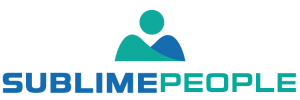In this Article:
What is onboarding and why do companies do it
The term “onboarding” is often used in business context to refer to the process by which new employees are integrated into an organization. The employee onboarding process typically includes a variety of activities, such as providing new hires with information about the company, introducing them to their new colleagues, and orienting them to the organization’s culture and operations.
There are a number of reasons why companies invest in employee onboarding processes. One key reason is that an effective employee onboarding process can help new hires get up to speed quickly and be more productive from the start. Additionally, the employee onboarding process can help reduce employee turnover and provide a better experience for new hires, which can lead to higher levels of satisfaction and loyalty.
The different types of onboarding processes
There are different types of employee onboarding processes that companies may use. Some common types of onboarding processes include:
1. Orientation:
Orientation is a process where new hires are given an overview of the company, its history, culture, and operations. This can include learning about the company’s values and how they are reflected in day-to-day operations.
2. Training:
Training is a process where new employees learn the specific skills and knowledge they need to perform their job duties and increase employee engagement. This may include training on the company’s software or systems, as well as training on how to work with other team members and customers. The training program is usually organized by the HR team.
3. Assimilation:
Assimilation is a process where new hires are integrated into the company’s social networks. This includes meeting colleagues outside of work, going to lunch with coworkers, and participating in social activities together.
4. Integration:
Integration is a process where new employees are integrated into the company’s business processes. This includes learning about how things get done within the organization, who makes decisions, and how work is coordinated across teams to encourage employee engagement.
How to design an effective onboarding program
When designing an effective onboarding program, it is important for hiring managers to consider the different types of employee onboarding processes and the needs of the new employees.
Once the needs of the new hires have been considered, it is important to tailor the onboarding process to meet those needs. For example, if training is a key need, then the onboarding process should focus on providing new hires with adequate training. If assimilation is a key need, then the employee onboarding process should focus on helping new hires meet other team members and get involved in social activities.
It is also important to ensure that the employee onboarding process is ongoing. New hires should continue to receive support and guidance from their managers and other team members as they settle into their roles and learn more about the company.
Implementing the new onboarding process
Once you have designed an effective new employee onboarding process, it is important to implement it effectively. This includes ensuring that new hires receive the required information and training and that they are properly integrated into the company’s culture and business processes. It is also important to track the results of the onboarding process. This can help you determine whether the process is meeting the needs of new hires and whether any changes need to be made.
Evaluating the success of the employee onboarding process
One way to evaluate the success of an employee onboarding process is to track the results of new hires. This can include measures such as how productive they are from the start, how long they stay with the company, how well they take on the company culture, and how satisfied they are with their experience. Another way to evaluate the success of the employee onboarding process is to ask new hires for feedback. This can help you determine whether they feel like they received adequate information and training and whether they feel integrated into the company culture and business processes.
Is onboarding the same as recruitment?
No, onboarding is not the same as recruitment. Onboarding is the process of welcoming new employees and helping them to settle into their new roles. Recruitment is the process of hiring managers finding and hiring new employees.
What is the meaning of an onboarding session?
An onboarding session is a meeting or orientation where a newly hired employee is introduced to the company and its policies, procedures, and culture. It is often led by the HR department and provides new employees with information about the company’s history, values, and operations. The goal of an onboarding program session is to help new employees feel welcome and prepared for their new job.
How do you conduct an onboarding session?
- Have an employee onboarding process checklist, which includes creating a plan that outlines the goals of the meeting and the topics that will be covered. The plan should be tailored to meet the needs of the new employees and is usually organized by the HR team.
- Gather the required information and materials. This includes orientation materials, training manuals, and any other documentation that the new employee will need.
- Invite the new employee(s) and their managers to the meeting. The meeting should be structured in a way that allows the new hire to ask questions and learn more about the company. It is also important to ensure that managers are prepared to support new employees as they settle into their roles.
What are onboarding documents?
Onboarding documents are materials that new employees receive during their onboarding session. They include orientation materials, training manuals, and any other documentation that new employees will need. The goal of onboarding documents is to provide new employees with information about the company and company policies, procedures, and culture.
How do you write an onboarding document?
- Create a plan that outlines the goals of the document and the topics that will be covered. The plan should be tailored to meet the needs of the new employees.
- Gather the required information and materials to include in the document.
- Write the document itself. The document should be easy to read and should cover all of the key topics that new employees need to know.


